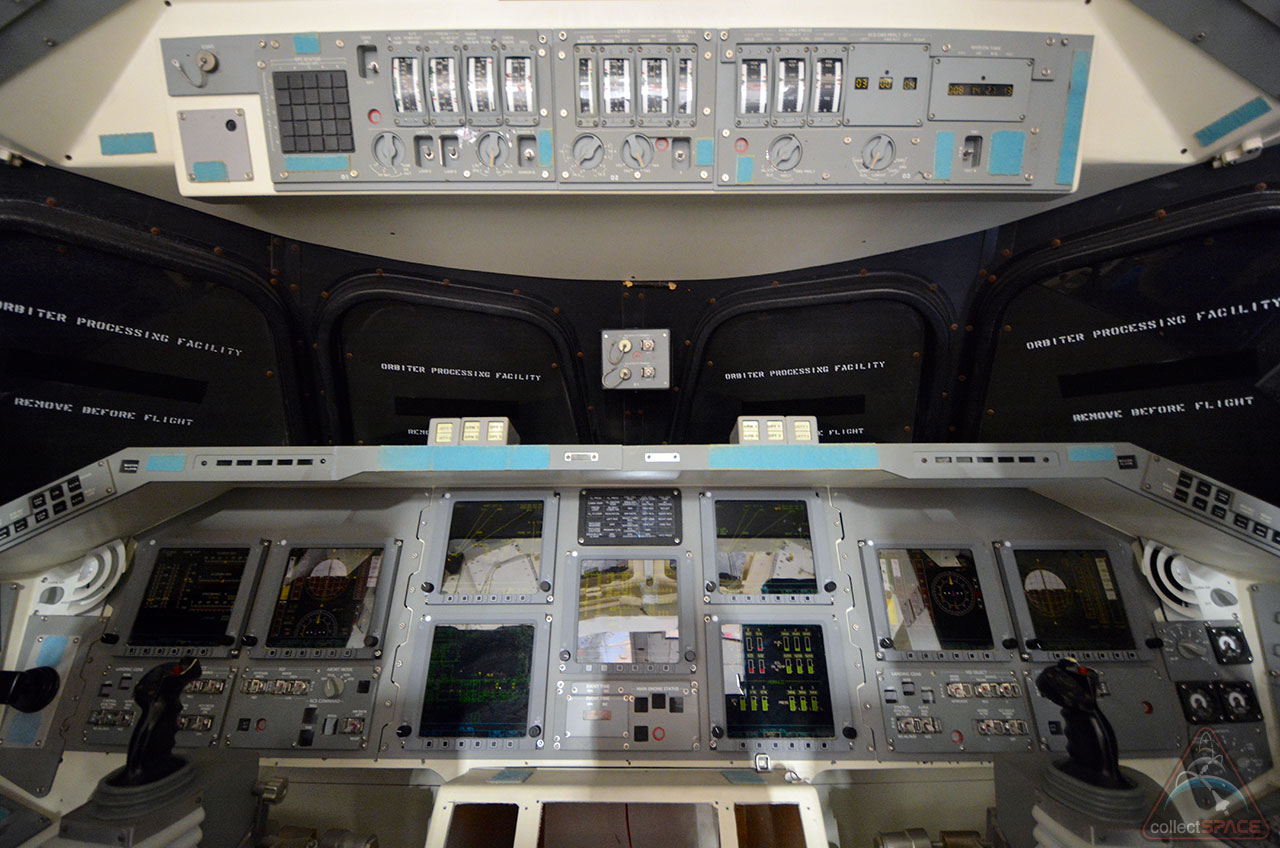
#Space shuttle cockpit seattle how to
More than once I asked Bloomfield questions on how to accomplish certain tasks-How do you perform a launch abort? How do you change your orientation or orbital track?-and Bloomfield would simply pluck one of the procedure books off its velcro perch and look up the answer. Procedures and checklist books were scattered everywhere, even in the trainer (not surprising, considering that the CCT2 was used to familiarize astronauts with the control layouts of the shuttle). It only burned on the Apollo 1 fire because the Apollo 1 command module was at the time filled with pure oxygen at 16.7 psia-conditions that can turn even flame-retardant materials into potential ignition sources.) The space shuttle kept its cabin pressurized to an Earth-normal 14.7 psia with a mix of about 80 percent nitrogen and 20 percent oxygen, and under those conditions velcro is not flammable. (In spite of how it burned in the Apollo 1 fire, velcro isn’t a significant fire hazard. Small items tend to float away in microgravity, so astronauts request that velcro be affixed to just about every blank surface so they can fix things like books, pens, and eating utensils in place.
#Space shuttle cockpit seattle movie
To the left of the lockers was the food prep station, which contained a small oven and potable water dispenser (for both drinking water and for rehydrating meals), and then to the left of that, along the aft wall, was the toilet compartment.Įvery available surface, from floor to ceiling, was covered in strips of velcro-something that not every space movie gets right.

Bloomfield smiled as he pointed out the drawer at the very top where the snacks were kept (typical items you’d find anywhere, like potato chips and candy), saying that the snack drawer was often the first thing on any given mission to run dry. The forward wall of the mid-deck is taken up by supply lockers that are used to hold things the crew needs for the mission, including snacks. Bloomfield explained that the mid-deck only becomes roomy in the microgravity environment of low earth orbit, where suddenly all the available nooks and crannies become accessible. Three adult humans-Bloomfield, my photographer Steve, and I-took up most the available space just standing around getting positioned so that Steve could take photos of us was often an exercise in shifting and elbowing. Several sections of the building were dedicated to specific training tasks-there was a life-sized SSRMS mock-up (the Space Shuttle Remote Manipulator System-the shuttle’s "arm"), for example, along with a number of other training setups. It featured the exact interior layout of an actual space shuttle, but the controls were inert and non-functional (with a few exceptions like the switches for cabin lighting).Īt the time of our tour, the SVMF featured a high-fidelity mock-up of the International Space Station and a Soyuz. The Crew Compartment Trainer II, which we toured, was such a mock-up. The mock-ups housed in the SVMF are usually "high fidelity," meaning that they closely resemble the actual vehicles and components that will be launched into space. The configuration of mock-ups in the SVMF changes with some regularity for various training tasks.

Permanently mounted to ceiling rails inside the high-bay is a pair of enormous overhead cranes for moving equipment around. The T-shaped structure’s main feature is the SVMF high-bay itself, which is oriented northwest-southeast and capped at the southeast end by an enormous pair of sliding doors (used to install or remove mock-ups). The facility is located inside an enormous warehouse on the JSC campus. Further Reading The audacious rescue plan that might have saved space shuttle Columbia


 0 kommentar(er)
0 kommentar(er)
